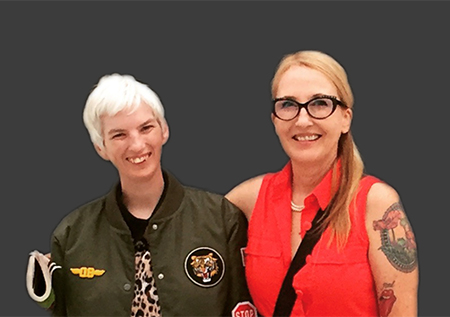For a person with developmental disabilities, maximizing learning potential is crucial, and as eye care professionals, we play an essential role in facilitating this endeavor. For those with cognitive delays, achieving the best visual acuity is imperative, as refractive errors exacerbate quality of life and hamper their ability to reach their true potential.
Eyesight accounts for roughly 80 percent of our perceptions and cognition. Good eyesight helps us navigate and learn about our world and is pivotal in learning inside and outside the classroom for both children and adults. Unfortunately, eye conditions in this population are often ignored because they don't complain or cannot express how they see.
 | |
| Lori has been in the optical field for over three decades and is Mom to Briana, her daughter with 5p- syndrome. |
Those on the autism spectrum typically experience sensory integration problems, and many have photophobia, including sensitivity to fluorescent lighting. Transitions XTRActive lenses help alleviate symptoms.
Servicing people with special needs requires patience and innovative practices during eye exams and optical dispensary visits. The appointment is best early or later in the day to allow adequate time not to rush the patient. Sign language or picture communication cards may be the primary form of communication, and caregivers typically accompany the individual and act as a communication liaison. People with developmental challenges often comprehend more than they can verbally express. Speaking naturally and in a soft voice (some are auditory sensitive) and never down to them promotes respect and encourages the patient to participate with the team of visual specialists.
Using the Picture Chart rather than the Snellen chart may result in a more accurate response and be the best choice, even for those who know their letters. Tumbling E charts may also be helpful. Always explain what will happen before performing tests. For children reluctant to try frames, keep it fun by incorporating toys or stuffed animals.
Frames must fit well and be comfortable. Some people with chromosomal syndromes have specific physical characteristics that must be considered for the best-fitting frames. Frames with nose pads work best for wide or small bridges, and appropriate temple length reduces a sloppy fit. People on the Autism Spectrum can be very tactilely sensitive warranting lightweight frames. Special attention and patience when choosing frames helps ensure that the right one is chosen the first time and reduces the return rate or adjustment problems in the future. Premium anti-reflective coatings with hydrophobic and oleophobic properties help keep the lenses clean and scratch-free while improving vision and reducing fingerprints, thus improving vision, an essential consideration as this population may not care for them properly. Elastic straps to keep the glasses on the face may be necessary for some patients.
Fitting eyeglasses to a person with special needs can pose challenges, but the rewards are boundless. Everyone deserves good eyesight, and as eye care professionals, we can help those in need see better and experience the world and all its wonders, thereby improving the quality of life.












